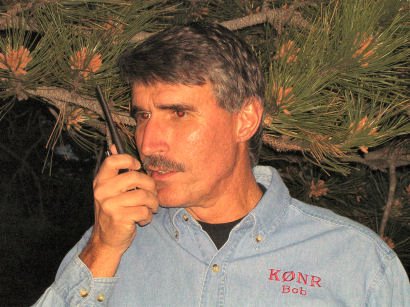My First D-STAR Repeater Contact
 Here is another milestone in my D-STAR experience....my first repeater contact using the technology. (I had previously been using D-STAR on simplex.) There are no D-STAR machines within range of my house, but there is one west of Denver (the Colorado D-STAR Association, W0CDS).
Here is another milestone in my D-STAR experience....my first repeater contact using the technology. (I had previously been using D-STAR on simplex.) There are no D-STAR machines within range of my house, but there is one west of Denver (the Colorado D-STAR Association, W0CDS).I was headed to the Denver airport for a business trip to the west coast and I realized I would be within the W0CDS repeater coverage. I had previously programmed my IC-91AD with the right info to access the W0CDS UHF repeater on 446.9625 MHz. (If you think getting the right CTCSS tone plugged in is difficult, wait until you deal with the callsign routing for D-STAR.) I tossed the HT in the car and gave a call when I got close enough to Denver. Barry KA0BBQ came back to my call and we chatted for a few minutes.
As widely reported, the D-STAR audio is fine but you have to get used to how it cuts out under weak signal conditions. You don't have the gradual fade of increasing FM noise...it just starts cutting out, similar to a digital mobile phone. I just had the HT rubber duck antenna inside the vehicle, so the signals were a bit on the weak side.
Watch www.dstarusers.org to see D-STAR activity.
73, Bob K0NR



2 Comments:
"(If you think getting the right CTCSS tone plugged in is difficult, wait until you deal with the callsign routing for D-STAR.)" You force me to comment, I see call-sign routing as similarr to the radio user ID's in public safety radios, it takes time to program thim in durring initial setup. However if you read the manual you can automatically save heard stations for later recall (which surpasses even the most complex p25 radio) this eases some of the callsign programming when making contacts. The end to this rambling interjection is that once the callsigns are programmed all you have to do is find the right channel and recall the caallsign of the user/ system you want to talk to.
Elliot,
Even the CTCSS stuff is just fine once you get it all programmed in. Its the initial setup that takes the time. - Bob
Post a Comment
Links to this post:
Create a Link
<< Home